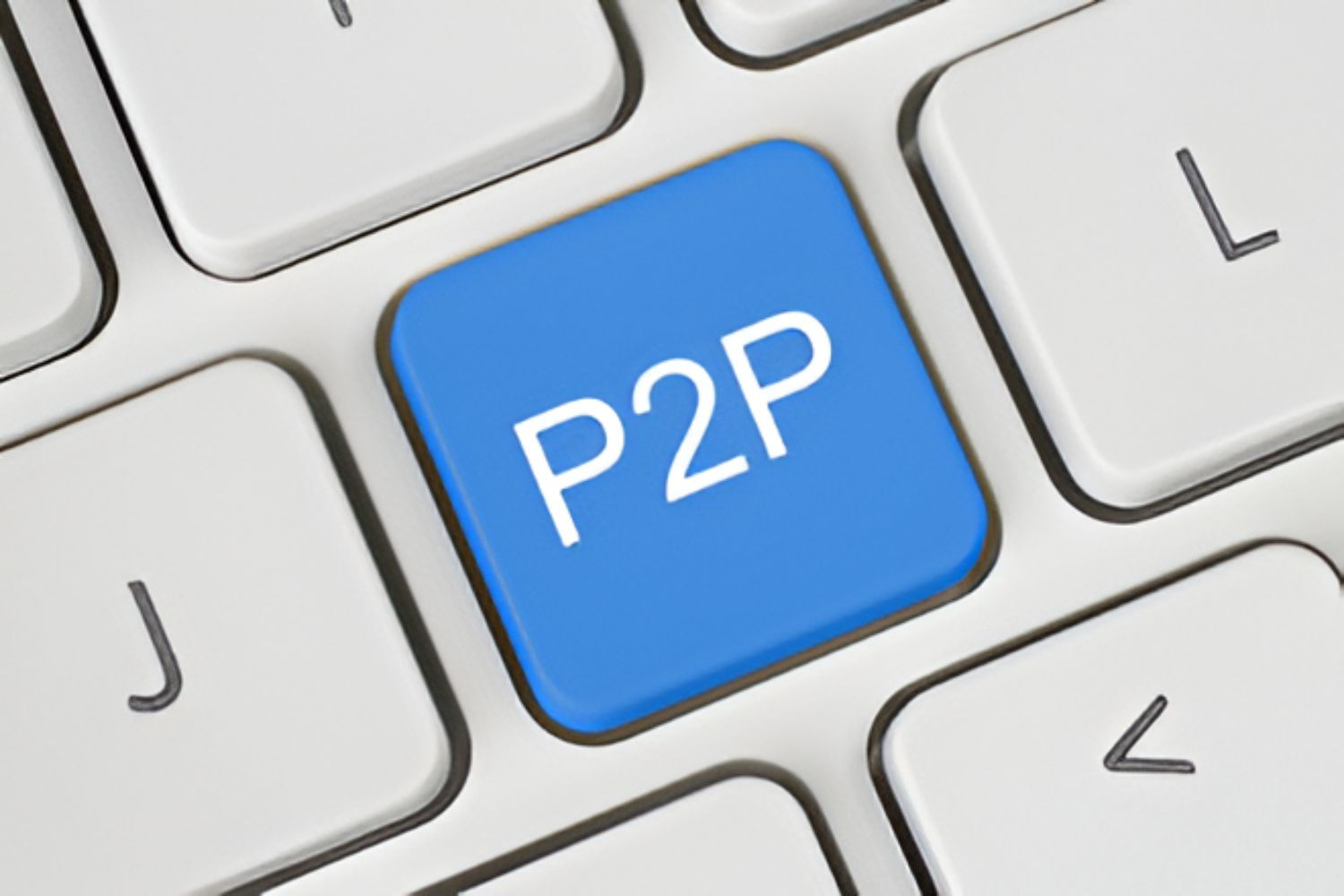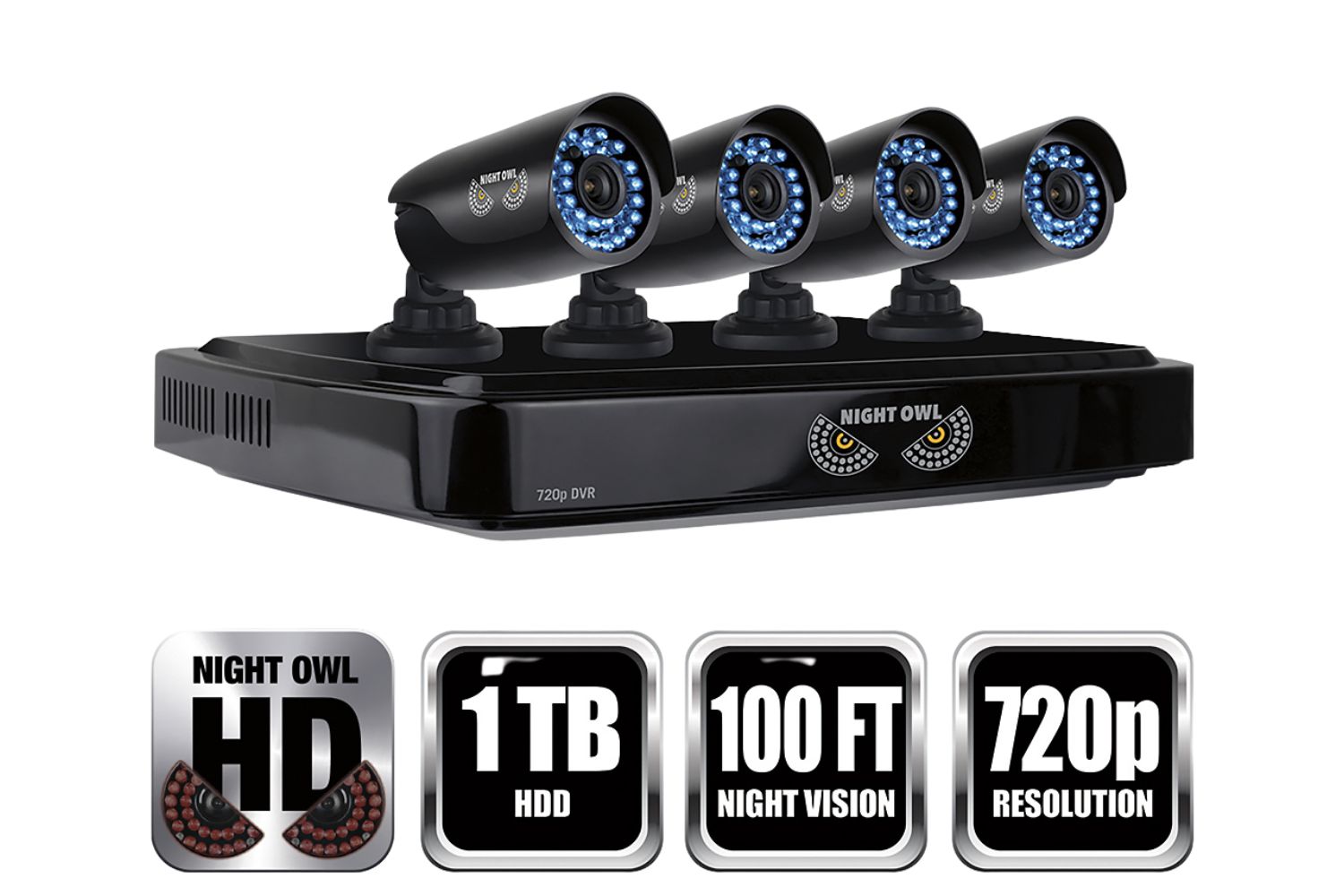Introduction
Welcome to the world of P2P process! In today’s fast-paced business environment, organizations are constantly striving to streamline their operations and achieve greater efficiency. One critical aspect of this endeavor is the Procure-to-Pay (P2P) process, which plays a vital role in managing the procurement and payment activities of a company.
The P2P process involves several interconnected steps, starting from the need identification and requisitioning of goods or services, all the way to the final payment to the vendor. It encompasses activities such as vendor selection, purchase order creation, goods receipt, invoice processing, and payment reconciliation.
Implementing an effective P2P process brings numerous benefits for organizations. By streamlining and automating procurement and payment activities, companies can achieve cost savings, improve process efficiency, enhance supplier relationships, and ensure better control and compliance.
However, the P2P process is not without its challenges. Poor communication between departments, manual and paper-based processes, lack of visibility and control, inaccurate data and errors, and compliance issues can hinder the smooth execution of the process.
In this article, we will dive deeper into the P2P process, exploring its various steps and the challenges organizations might face. We will also discuss best practices for optimizing the P2P process and ensuring its seamless execution. So, let’s embark on this journey to unravel the intricacies of the P2P process, and discover how it can drive operational excellence and financial success for businesses.
What is P2P Process?
The Procure-to-Pay (P2P) process, also known as the Purchase-to-Pay process, is a series of interconnected steps that organizations follow to manage their procurement and payment activities. It involves the entire lifecycle of a procurement transaction, starting from the identification of the need for goods or services to the final payment to the vendor.
The P2P process begins with requisitioning, where employees identify the need for certain goods or services and create a requisition. This requisition then goes through a review and approval process before moving on to vendor selection.
In the vendor selection phase, organizations assess and evaluate potential vendors based on factors such as pricing, quality, delivery capabilities, and past performance. Once a vendor is selected, a purchase order is created, specifying the quantity, price, and delivery details of the items or services to be procured.
The goods receipt step involves verifying the received items against the purchase order to ensure that they match the requested specifications and quantities. This helps in identifying any discrepancies or issues with the received goods.
After the goods receipt, the invoice processing phase begins. In this step, the vendor sends an invoice for the delivered goods or services. The invoice is verified for accuracy, matching it with the purchase order and goods receipt. Once validated, the invoice is approved for payment.
Finally, in the payment stage, the organization settles the approved invoices and disburses the payment to the vendor. This could be done through various payment methods such as electronic funds transfer or checks.
The P2P process provides organizations with several benefits. It helps in reducing maverick spending and ensuring compliance with procurement policies. By streamlining the entire procurement and payment process, companies can achieve cost savings, improve process efficiency, enhance supplier relationships, and gain better visibility and control over their spending.
It is essential for organizations to implement robust systems and technologies that automate and integrate the various steps of the P2P process. This not only increases efficiency but also reduces the risk of errors and enables better data analysis for strategic decision-making.
Now that we have a clear understanding of what the P2P process entails, let’s explore the challenges organizations might face in executing it and the best practices for optimization in the upcoming sections.
Benefits of Implementing P2P Process
Implementing an effective Procure-to-Pay (P2P) process brings numerous benefits for organizations, enabling them to streamline procurement and payment activities and drive operational excellence. Let’s explore some of the key advantages of implementing the P2P process:
- Cost Savings: By automating the procurement and payment process, organizations can achieve significant cost savings. With better visibility and control over spending, companies can negotiate better prices with suppliers, identify cost-saving opportunities, and eliminate maverick spending.
- Process Efficiency: The P2P process helps organizations streamline their procurement and payment activities, reducing manual and paper-based processes. Automation enables faster and more accurate data entry, approval workflows, and invoice processing, improving overall process efficiency and reducing cycle times.
- Enhanced Supplier Relationships: The P2P process facilitates better communication and collaboration with suppliers. Organizations can establish long-term relationships based on trust and mutual benefits. Timely payments and efficient processes lead to improved supplier satisfaction, better negotiated contracts, and reduced supplier risk.
- Improved Visibility and Control: Implementing the P2P process provides organizations with real-time visibility into their procurement and payment transactions. This transparency helps in tracking and monitoring spending, identifying bottlenecks, and making data-driven decisions. With better control over the process, companies can enforce compliance with procurement policies and regulatory requirements.
- Data Analysis and Reporting: The P2P process generates a vast amount of data that can be leveraged for analysis and reporting. Organizations can gain valuable insights into their procurement patterns, supplier performance, and spending trends. This data-driven approach enables better strategic decision-making and aids in optimizing procurement strategies.
By implementing the P2P process, organizations can transform their procurement function from a mere transactional activity to a strategic operation that adds value to the business. It enables better cash flow management, reduces manual errors and redundancies, and ensures compliance with internal controls and external regulations.
Now that we understand the benefits of implementing the P2P process, let’s delve into the various steps involved in executing the process.
Steps in the P2P Process
The Procure-to-Pay (P2P) process involves a series of interconnected steps that organizations follow to manage their procurement and payment activities. Let’s explore the key steps involved in executing the P2P process:
- Requisitioning: The P2P process begins with requisitioning, where employees identify the need for goods or services and create a requisition. This could be done through an online requisition system or a manual request form. The requisition includes details such as the item or service description, quantity needed, desired delivery date, and any specific requirements.
- Vendor Selection: Once the requisition is created and approved, organizations move on to the vendor selection phase. In this step, potential vendors are evaluated based on factors such as pricing, quality, delivery capabilities, and past performance. This allows organizations to select the most suitable vendor that meets their requirements.
- Purchase Order Creation: After the vendor is selected, a purchase order is created. The purchase order includes specific details such as the item or service description, quantity, price, delivery address, and terms and conditions. It serves as a legally binding contract between the organization and the vendor.
- Goods Receipt: Once the vendor delivers the goods or completes the service, organizations verify the received items against the purchase order. The goods receipt process involves checking the quantity, quality, and condition of the received items. Any discrepancies or issues are noted, and appropriate actions are taken to resolve them.
- Invoice Processing: After the goods receipt is confirmed, the vendor sends an invoice for the delivered goods or services. The invoice is matched with the corresponding purchase order and goods receipt to ensure accuracy. It undergoes a review process to validate the correct pricing, quantity, and calculations. Once the invoice is verified and approved, it is ready for payment.
- Payment: The final step in the P2P process is the payment to the vendor. Once the invoice is approved, organizations initiate the payment process. This could be done electronically through electronic funds transfer (EFT) or by issuing a physical check. Organizations maintain a record of payments made to vendors for future reference and audit purposes.
Each step in the P2P process plays a crucial role in ensuring a smooth and efficient procurement and payment process. It is essential for organizations to establish clear policies and guidelines for each step and leverage technology to automate and streamline the process.
Now that we have a clear understanding of the steps involved in the P2P process, let’s explore the challenges organizations might face in executing the process and discover best practices for optimizing it in the next sections.
Requisitioning
In the Procure-to-Pay (P2P) process, requisitioning is the first and vital step where employees identify the need for goods or services and create a requisition. This step serves as the initial request for procurement and sets the process in motion. Let’s delve deeper into the requisitioning step and understand its significance.
During requisitioning, employees identify their requirements by specifying the item or service needed, quantity, desired delivery date, and any additional specifications. They may use an online requisition system or fill out a manual request form to initiate the process. The requisition includes essential details to guide subsequent steps in the P2P process.
A well-defined requisitioning process establishes clear guidelines and ensures that all necessary information is provided. This streamlined approach prevents confusion and enhances efficiency throughout the process. Furthermore, requisitioning enables organizations to track and manage demand, facilitating better planning and budgeting.
Effective requisitioning requires collaboration between departments or individuals involved in the procurement process. Open communication channels and clear lines of authority are essential to ensure that requisitions are properly reviewed and approved. This helps prevent unauthorized purchases and ensures alignment with organizational objectives and policies.
Automating the requisitioning process offers several benefits. It reduces manual errors and speeds up the overall process. Electronic requisition systems provide visibility into approval workflows, allowing stakeholders to track requisitions in real-time. Additionally, automated systems can enforce budget checks and compliance with procurement policies, mitigating the risk of overspending or non-compliant procurements.
Organizations can optimize the requisitioning process by implementing best practices such as:
- Standardizing requisition formats: Defining a standardized template for requisitions ensures consistency and allows for better data analysis and reporting.
- Implementing approval workflows: Establishing clear approval hierarchies and automated approval workflows streamline requisition processing and improve accountability.
- Training and communication: Educating employees on the requisitioning process, including the required information and any specific guidelines, promotes adherence to organizational policies.
- Regular review and analysis: Regularly assessing the requisitioning process helps identify bottlenecks, address inefficiencies, and implement continuous improvement initiatives.
By putting emphasis on the requisitioning step, organizations can establish a strong foundation for a successful P2P process. It sets the stage for subsequent steps such as vendor selection, purchase order creation, and invoice processing.
Now that we have explored the requisitioning step, let’s move on to the next section to understand the crucial process of vendor selection in the P2P process.
Vendor Selection
In the Procure-to-Pay (P2P) process, vendor selection is a critical step that organizations undertake to evaluate and choose the most suitable vendors to fulfill their procurement needs. This step plays a vital role in ensuring the quality, reliability, and value of the goods or services acquired. Let’s delve into the vendor selection process and understand its significance in the overall P2P process.
Vendor selection involves evaluating potential suppliers based on various criteria, including pricing, quality, delivery capabilities, past performance, and their ability to meet specific requirements. Organizations typically rely on a combination of factors and evaluation methods to assess vendors and make informed decisions.
One common approach to vendor selection is conducting a comprehensive Request for Proposal (RFP) or Request for Quotation (RFQ) process. Organizations outline their needs and requirements, and vendors submit proposals or quotes that detail how their products or services align with those needs. Evaluating these proposals or quotes allows organizations to compare vendors and make informed decisions.
Organizations can also leverage supplier databases, industry reports, and market research to identify potential vendors. By conducting due diligence, organizations can verify a vendor’s credibility, reputation, financial stability, and compliance with industry standards and regulations.
Collaboration between various stakeholders, such as procurement teams, finance teams, and end-users, plays a crucial role in the vendor selection process. Engaging relevant personnel in the evaluation process ensures that different perspectives and requirements are considered, leading to a more comprehensive and informed decision-making process.
In addition to evaluating the vendor’s capabilities and qualifications, organizations need to consider other factors such as the vendor’s geographical location, scalability, sustainability practices, and the potential for long-term partnerships. Building strong relationships with reliable and trustworthy vendors can result in benefits such as favorable pricing, priority access to resources, and improved collaboration.
Technology plays a significant role in streamlining the vendor selection process. Leveraging procurement tools and software can automate and centralize vendor information, streamline communication, and facilitate collaboration between stakeholders. Vendor management systems can also keep track of vendor performance and provide valuable insights for ongoing vendor evaluation and optimization.
Optimizing the vendor selection process requires organizations to follow best practices such as:
- Defining clear evaluation criteria: Establishing specific and measurable criteria enables a more objective assessment of potential vendors.
- Conducting thorough due diligence: Verifying the vendor’s credentials, capabilities, and compliance with industry standards mitigates risks and ensures a reliable partnership.
- Negotiating contracts carefully: Negotiating favorable terms, pricing, and service level agreements protects the organization’s interests and establishes clear expectations.
- Monitoring vendor performance: Regularly assessing vendor performance and addressing any issues or concerns helps maintain a high level of quality and service.
By implementing effective vendor selection practices, organizations can establish strategic partnerships, mitigate risks, and ensure the procurement of high-quality goods or services that meet their specific needs.
Now that we have explored the vendor selection step, let’s move on to understanding the next crucial step in the P2P process: purchase order creation.
Purchase Order Creation
In the Procure-to-Pay (P2P) process, purchase order creation is a crucial step that formalizes the agreement between the organization and the vendor. It serves as a legally binding document that outlines the details of the procurement transaction. Let’s delve into the purchase order creation process and explore its significance within the P2P process.
When the vendor has been selected and all necessary negotiations have taken place, the next step is to create a purchase order. The purchase order is a document that includes specific details such as the item or service description, quantity, price, delivery address, terms and conditions, and any other relevant information.
The purchase order serves as a contract between the organization and the vendor, ensuring that both parties are aware of the agreed-upon terms. It provides clarity and establishes clear expectations regarding what is being purchased and under what conditions.
Creating a purchase order is essential for several reasons. Firstly, it helps prevent misunderstandings and disputes with the vendor. By clearly stating the specifications and requirements in the purchase order, organizations can ensure that the vendor delivers the correct items or services.
Secondly, the purchase order facilitates better inventory management. By including the quantities to be procured, organizations can track and manage inventory levels more effectively. This helps prevent stockouts and ensures that the organization has the necessary goods or services available when needed.
Moreover, the purchase order plays a crucial role in the accounts payable process. It acts as a reference point for invoice processing, allowing organizations to match incoming invoices with the corresponding purchase orders and goods receipts. This ensures accuracy and reduces the risk of overpayment or duplicate payments.
Technology plays a significant role in streamlining the purchase order creation process. Organizations can leverage procurement software or Enterprise Resource Planning (ERP) systems to automate and digitize purchase order creation. These tools allow for easy generation, tracking, and management of purchase orders, providing better visibility and control over the procurement process.
Optimizing the purchase order creation process involves following best practices such as:
- Standardizing purchase order formats: Establishing a consistent template for purchase orders ensures clarity and reduces confusion for both internal and external stakeholders.
- Including comprehensive information: Providing all relevant details, such as item descriptions, quantities, pricing, delivery dates, and terms and conditions, ensures that expectations are clearly communicated.
- Automating approval workflows: Implementing automated approval workflows ensures that purchase orders are reviewed and approved in a timely manner, reducing delays and bottlenecks.
- Regular review and monitoring: Periodically reviewing and analyzing the purchase order process helps identify any issues or areas for improvement, leading to a more efficient and effective process.
By implementing effective purchase order creation practices, organizations can establish clear communication with vendors, facilitate accurate invoice processing, improve inventory management, and enhance overall procurement efficiency.
Now that we have covered the purchase order creation step, let’s move on to the next important phase in the P2P process: goods receipt.
Goods Receipt
In the Procure-to-Pay (P2P) process, the goods receipt step plays a crucial role in verifying the received items or services against the purchase order. It ensures that the organization receives the correct quantity and quality of goods as agreed upon with the vendor. Let’s explore the goods receipt process and its significance within the P2P process.
The goods receipt process involves physically or electronically verifying the received items against the details mentioned in the purchase order. This step ensures that the organization has received the correct items, with the right quantity and quality, and that they meet the specified requirements and standards.
When goods are physically received, employees compare the items against the purchase order, checking for any discrepancies such as damaged goods, incorrect quantities, or variations in quality. The goods are inspected, counted, and verified to ensure they match the specifications and meet the organization’s expectations.
In cases where the P2P process involves services rather than physical goods, the goods receipt step ensures that the services have been performed to the expected standards and that all deliverables have been met.
The goods receipt process is essential for several reasons. It allows organizations to identify and address any issues with the received goods or services promptly. By documenting discrepancies or exceptions, organizations can communicate with the vendor, resolve any outstanding matters, or initiate returns or replacements if necessary.
In addition, the goods receipt step is crucial for accurate financial and inventory management. By confirming that the received goods match the purchase order, organizations can ensure that their inventory records are up to date and reflect the actual goods available on hand. This helps prevent stockouts, minimize excess inventory, and streamline procurement planning and forecasting.
Technology plays a significant role in optimizing the goods receipt process. Barcode scanners, radio frequency identification (RFID) technology, and automated data capture systems can expedite the verification process, improve accuracy, and reduce manual data entry errors. Integrated systems automatically update inventory records and trigger necessary actions based on the goods receipt data.
To optimize the goods receipt process, organizations can follow best practices such as:
- Prompt and accurate recording: Ensure that the goods receipt is documented accurately and promptly in the system to update inventory records and enable timely payment processing.
- Communication with stakeholders: Establish clear communication channels with relevant stakeholders involved in the goods receipt process, including warehouse staff, procurement teams, and accounts payable, to facilitate seamless coordination.
- Real-time tracking and monitoring: Leverage technology to track the progress of goods receipt, providing real-time visibility into the status of received items and enabling timely actions and issue resolution.
- Establishing return and rejection processes: Define well-defined procedures for returning or rejecting goods that do not meet the required specifications, ensuring a smooth resolution in such cases.
By implementing effective goods receipt practices, organizations can ensure that they receive the correct items or services, verify their quality, and maintain accurate inventory records. This contributes to smoother procurement and payment processes, minimized inventory discrepancies, and enhanced overall supply chain efficiency.
Now that we have covered the goods receipt step, let’s move on to understanding the next crucial step in the P2P process: invoice processing.
Invoice Processing
In the Procure-to-Pay (P2P) process, invoice processing is a critical step that bridges the gap between the goods receipt and the final payment to the vendor. It involves the verification, validation, and approval of the vendor’s invoice against the corresponding purchase order and goods receipt. Let’s explore the invoice processing step and its significance within the P2P process.
Once the goods or services have been received and confirmed through the goods receipt process, the vendor sends an invoice to request payment for the procurement transaction. The invoice includes details such as the item or service description, quantity, unit price, subtotal, taxes, and any applicable discounts or additional charges.
The invoice processing step involves several key activities. First, the invoice is verified for accuracy and completeness. It is compared with the corresponding purchase order and goods receipt to ensure that the invoiced items or services match the agreed-upon terms and quantities.
Next, the invoice goes through a validation process to ensure that the pricing, calculations, and applicable taxes are correct. Any discrepancies or errors are identified and resolved before proceeding with the approval process.
Approval workflows are established to ensure that the invoice is reviewed and approved by the appropriate stakeholders within the organization. This step helps validate the legitimacy of the invoice, verify the fulfillment of contractual obligations, and prevent unauthorized or incorrect payments.
Automated invoice processing systems can streamline the validation and approval workflows, eliminating manual paperwork and reducing processing time. These systems can automatically match invoices with purchase orders and goods receipts, flagging any discrepancies for review. They also provide visibility into the payment status and enable efficient collaboration between accounts payable departments and other stakeholders.
Efficient invoice processing offers several benefits, including:
- Accuracy and compliance: By validating and matching invoices with purchase orders and goods receipts, organizations ensure that payments are made accurately and in compliance with contractual terms.
- Timely payment processing: Streamlining the invoice processing workflow enables organizations to process payments promptly, thereby maintaining strong relationships with vendors and avoiding potential late payment penalties.
- Improved reconciliation: Effective invoice processing facilitates easier reconciliation of financial records, ensuring that all invoices are accounted for and appropriately recorded.
- Reduction in errors and fraud: Automated systems can flag suspicious or fraudulent invoices, reducing the risk of unauthorized payments and mitigating the potential impact on the organization’s financial health.
Organizations can optimize the invoice processing step by following best practices such as:
- Implementing electronic invoicing: Adopting electronic invoicing reduces manual data entry, minimizes errors, and speeds up the overall processing time.
- Establishing clear approval workflows: Defining clear approval hierarchies and setting up automated approval workflows ensures that invoices are reviewed by the appropriate individuals or departments in a timely manner.
- Regularly reviewing and reconciling invoices: Regularly reviewing and reconciling invoices helps identify any discrepancies, resolve issues promptly, and maintain accurate financial records.
- Leveraging analytics and reporting: Analyzing invoice data provides insights into spending patterns, identifies opportunities for cost savings, and improves procurement strategy.
By implementing effective invoice processing practices, organizations can streamline the payment process, improve financial control, avoid payment discrepancies, and maintain strong relationships with vendors.
Now that we have explored the invoice processing step, we will delve into the final step of the P2P process: payment.
Payment
In the Procure-to-Pay (P2P) process, the final step is the payment to the vendor for the goods or services rendered. This step involves the disbursement of funds based on the approved and validated invoice. Let’s delve into the payment step and understand its significance within the P2P process.
After the invoice has been processed and approved, organizations initiate the payment process. The payment can be made through various methods such as electronic funds transfer (EFT), checks, or other electronic payment systems.
Efficient and timely payment is crucial for maintaining strong relationships with vendors. By ensuring on-time payments, organizations can enhance their reputation and negotiate better terms and discounts with suppliers.
The payment step is not only essential for fulfilling financial obligations but also for maintaining accurate financial records. Each payment made to a vendor should be properly recorded and reconciled to ensure accurate financial statements and compliance with accounting standards.
The P2P process is often integrated with the organization’s accounts payable system, enabling seamless payment processing. With automation, payment information such as the vendor’s account details, payment terms, and due dates can be stored and processed electronically. This reduces manual effort, minimizes the risk of errors, and streamlines the payment process.
Payment terms and conditions are agreed upon during the vendor selection and purchase order creation steps. These terms include information on due dates, early payment discounts, and any contractual obligations related to payment. Adhering to these terms is crucial for maintaining positive relationships with vendors and ensuring the smooth flow of goods and services.
Optimizing the payment step involves following best practices such as:
- Automating payment processing: Implementing automated payment systems reduces the risk of errors, speeds up the payment process, and provides real-time visibility into payment status.
- Securing payment information: Organizations must ensure the security of payment information to protect against fraud and unauthorized access. Implementing secure payment portals and encryption technologies helps safeguard sensitive data.
- Establishing controls and segregation of duties: Implementing strong internal controls, including segregation of duties and dual authorization, ensures proper oversight and minimizes the risk of fraudulent payments.
- Regular reconciliation: Regularly reconciling payment records with financial statements and vendor statements helps identify any discrepancies and ensures accurate financial reporting.
By implementing effective payment practices, organizations can maintain strong relationships with vendors, uphold financial integrity, and ensure the smooth running of the P2P process.
With the completion of the payment step, the Procure-to-Pay process concludes. However, it is important to note that the P2P process is a continuous cycle that organizations undergo for every procurement transaction, ensuring efficient purchasing, accurate financial management, and strong supplier relationships.
Challenges in the P2P Process
While the Procure-to-Pay (P2P) process offers numerous benefits, organizations often face several challenges in its execution. Overcoming these challenges is crucial to ensure the effectiveness and efficiency of the P2P process. Let’s explore some common challenges organizations encounter in the P2P process:
1. Poor communication between departments: Inefficient communication between departments can lead to delays and errors in the P2P process. Lack of clear communication channels and misaligned expectations can hinder the smooth flow of information and coordination between procurement, finance, and other departments involved.
2. Manual and paper-based processes: Reliance on manual or paper-based processes can lead to inefficiencies, errors, and slower processing times. Manual data entry, paper-based documents, and manual approval workflows increase the risk of human error, miscommunication, and lost or misplaced documents.
3. Lack of visibility and control: Limited visibility into the procurement pipeline and lack of real-time data can hinder effective decision-making and proactive management of the P2P process. Without transparency throughout the process, organizations may struggle to track orders, monitor spending, and identify potential bottlenecks or inefficiencies.
4. Inaccurate data and errors: Inaccurate data entry, discrepancies between purchase orders, goods receipts, and invoices, and manual errors can cause payment delays, incorrect payments, and inaccurate financial reporting. Data inconsistencies and errors can result in inefficiencies, additional reconciliation efforts, and strained supplier relationships.
5. Compliance and regulatory issues: Non-compliance with regulatory requirements, internal policies, or industry standards can lead to financial penalties, reputational damage, and legal repercussions. Issues such as non-compliant suppliers, improper approval processes, or lack of proper controls can undermine the integrity of the P2P process.
These challenges can impact the organization’s overall operational efficiency, financial control, and supplier relationships. However, organizations can overcome these challenges by implementing best practices and leveraging technology and automation to optimize the P2P process.
Investing in integrated procurement and financial management systems can streamline processes, improve visibility, and enable better communication and collaboration between departments. Automating manual tasks, such as data entry and approval workflows, reduces human error and accelerates processing times. Implementing electronic data interchange (EDI) and electronic invoicing helps eliminate manual paperwork, improves accuracy, and facilitates seamless information exchange between stakeholders.
Additionally, conducting regular process reviews, training employees, and fostering effective communication and collaboration between departments can help address challenges related to poor communication and lack of visibility. Embracing data analytics and reporting tools allows organizations to gain insights, identify trends, and proactively address issues in the P2P process.
By addressing these challenges and implementing best practices and technology solutions, organizations can enhance the efficiency, accuracy, and compliance of their P2P process, leading to cost savings, improved supplier relationships, and streamlined financial operations.
Poor Communication between Departments
Poor communication between departments is a common challenge organizations face in the Procure-to-Pay (P2P) process. Inefficient communication can hinder the smooth flow of information, coordination, and decision-making, leading to delays, errors, and reduced efficiency. Let’s explore this challenge in more detail.
Effective communication between procurement, finance, and other departments is essential for the seamless execution of the P2P process. Lack of clarity, misaligned expectations, and breakdowns in communication can create bottlenecks and impede the progression of procurement activities.
One key issue that arises from poor communication is the difficulty in capturing accurate and complete requirements during the requisitioning phase. If the requisitioning department does not clearly communicate their needs to the procurement team, it can result in incorrect or incomplete purchase orders, leading to delays and rework.
Additionally, inadequate communication can hamper the vendor selection process. Without clear communication between stakeholders, procurement teams may not have accurate information about preferred suppliers, vendor evaluations, or specific requirements, leading to suboptimal vendor selection decisions.
Poor communication also impacts the approval workflow, as delays in obtaining approvals or lack of clarity in communication can lengthen the approval process. This can result in delayed purchase order creation or subsequent delays in fulfilling orders, impacting the overall procurement timeline.
Furthermore, communication gaps between procurement and finance can hinder the reconciliation of invoices, purchase orders, and goods receipts. Inaccurate or incomplete communication about pricing, quantities, or delivery details can result in discrepancies that delay the validation and approval of invoices. This delay can further impact timely payment to vendors and strain supplier relationships.
To address the challenge of poor communication between departments, organizations can implement several best practices:
- Establish clear lines of communication: Clearly define and communicate the roles and responsibilities of each department involved in the P2P process. Encourage open lines of communication, including regular meetings or check-ins, to ensure effective collaboration.
- Standardize communication channels and formats: Establish standardized communication channels, such as email or project management tools, to facilitate clear and consistent communication. Define communication templates or formats to ensure that key information is effectively shared.
- Improve visibility and transparency: Implement technology solutions that provide real-time visibility into the P2P process, allowing all departments to access relevant information and track progress. This increases transparency and facilitates better communication and coordination.
- Enhance cross-functional training: Train employees across departments to develop a better understanding of the P2P process and the roles and responsibilities of each department involved. This promotes awareness and empathy, allowing for smoother communication and collaboration.
- Document and share best practices: Encourage the documentation and sharing of best practices within the organization, enabling teams to learn from successful communication strategies and implement improvements.
By addressing poor communication and fostering effective collaboration between departments, organizations can overcome this challenge and enhance the efficiency and effectiveness of their P2P process. Clear communication channels, standardized processes, and training initiatives contribute to better coordination and streamlined procurement activities.
Manual and Paper-Based Processes
Manual and paper-based processes pose significant challenges to organizations in the Procure-to-Pay (P2P) process. These processes are prone to errors, inefficiencies, and delays, hindering the smooth flow of procurement activities. Let’s explore this challenge in more detail.
Organizations relying on manual and paper-based processes face numerous issues throughout the P2P process. Manual data entry increases the risk of errors, including typos, transcription mistakes, or incorrect calculations. These errors can lead to discrepancies between purchase orders, goods receipts, and invoices, resulting in payment delays and the need for additional manual reconciliation efforts.
In a paper-based environment, documents such as requisitions, purchase orders, goods receipts, and invoices are physically handled and transported across departments. This manual handling not only increases the risk of document loss or misplacement but also contributes to slower processing times. Physical documents require manual routing, review, and approval, leading to bottlenecks and delays in the P2P process.
Moreover, manual processes lack transparency and real-time visibility. It can be difficult to track the progress of a procurement transaction when documents are physically moving from one department to another. This lack of visibility makes it challenging to monitor the status of orders, identify potential bottlenecks, and provide timely updates to stakeholders.
Manual and paper-based processes also impede effective collaboration and communication between departments. Delays in document handling and transportation can create a disconnect between procurement, finance, and other departments involved in the P2P process. This lack of coordination can lead to miscommunication and errors in the interpretation of requirements or expectations.
To overcome the challenges posed by manual and paper-based processes, organizations can implement several best practices:
- Transition to digital solutions: Adopting digital solutions, such as procurement software or enterprise resource planning (ERP) systems, helps automate and streamline the P2P process. These systems enable electronic data entry, document storage, and automated workflows, reducing manual effort and increasing efficiency.
- Implement electronic document management: Replace physical documentation with electronic document management systems. This allows for secure storage, easy retrieval, and controlled access to key documents, reducing the risk of document loss or misplacement.
- Automate approval workflows: Leverage technology to automate approval workflows, eliminating the need for physical routing and manual signatures. Automated workflows ensure faster, consistent, and auditable decisions, reducing processing time and improving overall efficiency.
- Encourage electronic collaboration: Utilize collaboration tools and project management platforms to facilitate efficient communication and collaboration between departments. This allows for real-time updates, task tracking, and seamless information sharing.
- Invest in electronic data interchange (EDI): Implement EDI to electronically exchange transactional data with suppliers. EDI streamlines document exchange, improves order accuracy, and reduces manual data entry, enabling faster processing and reduced errors.
By transitioning from manual and paper-based processes to digital solutions, organizations can overcome the challenges associated with manual data entry, slow processing times, lack of transparency, and communication gaps. Digitization improves accuracy, streamlines workflows, enhances collaboration, and provides real-time visibility into the P2P process.
Lack of Visibility and Control
The lack of visibility and control is a significant challenge that organizations face in the Procure-to-Pay (P2P) process. Inefficient visibility and limited control over procurement activities can lead to inefficiencies, increased risks, and hindered decision-making. Let’s explore this challenge in more detail.
Visibility refers to the ability to have real-time information and insights into the various steps and transactions within the P2P process. Control, on the other hand, relates to the ability to enforce compliance, manage risks, and maintain accountability throughout the process.
A lack of visibility in the P2P process can stem from using disparate systems, manual processes, or inadequate data management practices. Without a centralized system or streamlined processes, organizations struggle to have a unified view of procurement activities. This lack of visibility can make it difficult to track orders, monitor spending, identify bottlenecks, and make informed decisions.
The absence of control mechanisms within the P2P process can result in non-compliance with internal policies and external regulations. Insufficient controls may allow unauthorized purchases, inappropriate spending, or non-compliant suppliers to enter the procurement process, exposing organizations to financial and reputational risks.
Additionally, the lack of visibility and control can impede accurate financial reporting. Inaccurate or incomplete data in the P2P process can affect budgeting, forecasting, and financial analysis. It becomes challenging to reconcile financial records, identify spending trends, or accurately report financial performance.
Organizations can address the lack of visibility and control through several best practices:
- Implement integrated systems: Integrate procurement, finance, and other relevant systems to provide a comprehensive view of the P2P process. Integrated systems improve data accuracy, reduce redundancies, and enhance visibility.
- Centralize data management: Establish a centralized repository for P2P data, ensuring that all relevant information is captured, stored, and easily accessible. Centralization enhances data accuracy, streamlines analysis, and facilitates reporting and decision-making.
- Automate data capture and analytics: Leverage automation tools and analytics platforms to capture, process, and analyze data in real-time. Automated data capture reduces errors and delays, while analytics provide valuable insights for proactive decision-making.
- Enforce compliance: Establish clear policies and guidelines for procurement activities, ensuring adherence to internal controls, industry regulations, and contractual obligations. Regular audits and training programs help maintain compliance and mitigate risks.
- Implement effective risk management: Identify and assess risks within the P2P process and develop strategies to mitigate them. This includes measures to detect and prevent fraud, optimize supplier selection, and establish robust contract management practices.
By implementing these best practices, organizations can enhance visibility and control over the P2P process. Efficient data management, integrated systems, and compliance measures contribute to accurate financial reporting, proactive decision-making, risk mitigation, and improved overall performance.
Increased visibility and control enable organizations to identify areas for cost savings, drive process efficiencies, foster better supplier relationships, and make data-driven decisions in the P2P process.
Inaccurate Data and Errors
Inaccurate data and errors present a significant challenge in the Procure-to-Pay (P2P) process. The presence of mistakes, inconsistencies, or incorrect information can disrupt the efficiency and reliability of the entire procurement process. Let’s explore this challenge in more detail.
Errors can occur at various stages of the P2P process, including requisitioning, vendor selection, purchase order creation, goods receipt, invoice processing, and payment. Inaccurate data entry, manual mistakes, or miscommunication can lead to discrepancies between documentation, such as purchase orders and invoices, resulting in delays, payment errors, and potential damage to supplier relationships.
One common area where errors can arise is during requisitioning. Inaccurate or incomplete information provided by end-users can lead to incorrect item descriptions, quantities, or delivery dates. These errors can create challenges during subsequent steps, such as vendor selection and purchase order creation.
Inaccurate data can also result from discrepancies between the purchase order and goods receipt. If goods or services received do not match the details specified in the purchase order, it can lead to discrepancies in quantities, pricing, or quality. These inaccuracies can cause delays in approving invoices and discrepancies during payment processing.
Another common error is inaccurate manual data entry during invoice processing. Mistakes in entering invoice amounts, data fields, or mismatching invoice details with supporting documents can trigger payment delays, duplicate payments, or incorrect accounting entries.
The presence of errors and inaccurate data can create inefficiencies, impact financial records, and strain supplier relationships. Additional time and resources are required to rectify errors, leading to delayed payment processing and potentially disrupting the overall P2P process.
Organizations can address this challenge by implementing best practices to minimize inaccuracies and errors:
- Automation and system integration: Implement technology solutions that automate data entry and integrate systems to minimize manual errors and ensure data consistency across various stages of the P2P process.
- Data validation and verification: Establish validation rules and verification processes to ensure accuracy and consistency of data inputs, allowing for checks against predefined criteria and reducing the likelihood of errors.
- Standardization and documentation: Design and maintain standardized templates, formats, and guidelines for procurement documentation, including requisitions, purchase orders, and invoices, to minimize errors and ensure clear communication.
- Training and awareness: Provide training and education to employees involved in the P2P process to ensure they understand the importance of accuracy and error prevention. This includes proper data entry techniques, attention to detail, and adherence to defined processes and guidelines.
- Implement data validation checks: Incorporate data validation checks and error alerts within systems to catch and flag potential errors or inconsistencies in real-time, allowing for immediate corrections.
By implementing these best practices, organizations can reduce errors, improve data accuracy, and enhance the overall reliability and efficiency of the P2P process. Accurate data ensures timely payments, maintains healthy supplier relationships, and enables accurate financial reporting.
Compliance and Regulatory Issues
In the Procure-to-Pay (P2P) process, compliance with internal policies, industry regulations, and legal requirements is crucial. The failure to comply with these standards can result in financial penalties, reputational damage, legal issues, and operational disruptions. Let’s explore the challenges organizations face regarding compliance and regulatory issues in the P2P process.
Compliance and regulatory challenges can arise from several factors within the P2P process. These include non-compliant suppliers, inadequate internal controls, improper approval processes, lack of transparency, or failure to meet legal obligations such as tax compliance, data privacy, or ethical sourcing requirements.
One common compliance issue is engaging non-compliant or unverified suppliers. Organizations must ensure that suppliers comply with relevant regulations, such as labor laws, environmental regulations, and anti-corruption policies. Failing to engage with compliant suppliers can result in legal and reputational risks and may lead to disruptions in the supply chain.
Internal controls are necessary to maintain compliance within the P2P process. Inadequate controls can lead to unauthorized purchases, improper access to sensitive information, or mismanagement of vendor contracts. Lack of segregation of duties and oversight increase the risk of fraudulent activities or errors, impacting compliance and financial integrity.
Improper approval processes and protocol can lead to non-compliance with organizational policies. Failing to follow proper approval hierarchies, skipping necessary reviews, or inconsistent application of approval criteria can result in unauthorized procurement transactions and misaligned expenditures.
Transparency is essential for compliance in the P2P process. Organizations must ensure transparency in vendor selection, contract management, and financial reporting to prevent conflicts of interest, favoritism, or unethical behavior. Lack of transparency can result in lawsuits, regulatory penalties, and damage to the organization’s reputation.
To address compliance and regulatory challenges, organizations can implement several best practices:
- Supplier due diligence: Establish a robust supplier screening process to ensure compliance with legal and ethical standards. This includes assessing suppliers for compliance with labor laws, environmental regulations, and quality standards.
- Clear policies and guidelines: Develop and communicate clear policies and guidelines for procurement activities, ensuring adherence to internal controls and legal requirements. Regularly review and update these policies to remain in line with changing regulations.
- Contract management: Implement a structured contract management process to ensure compliance with contractual terms and conditions, including service level agreements, data privacy requirements, and intellectual property rights.
- Training and awareness: Provide regular training to employees involved in the P2P process to educate them on compliance requirements, ethical practices, and regulatory obligations. This promotes understanding, awareness, and accountability.
- Regular audits and monitoring: Conduct regular audits of the P2P process to identify non-compliance issues, assess control effectiveness, and implement corrective measures. Continuous monitoring helps ensure compliance and prevent fraudulent activities.
By implementing these best practices, organizations can mitigate compliance and regulatory risks within the P2P process. Maintaining compliance safeguards the organization’s reputation, minimizes legal and financial risks, and fosters a culture of ethical and responsible procurement.
Best Practices for Optimizing the P2P Process
Optimizing the Procure-to-Pay (P2P) process is essential for organizations to drive efficiency, reduce costs, enhance supplier relationships, and improve financial control. By implementing best practices, organizations can streamline their P2P process and achieve operational excellence. Let’s explore some key best practices for optimizing the P2P process.
- Standardize and centralize processes: Define standardized processes and procedures for each step of the P2P process and ensure they are consistently followed across the organization. Centralize data, documents, and information to enhance visibility, control, and consistency.
- Automate workflows and data entry: Leverage technology solutions to automate manual tasks, such as data entry, approval workflows, and document management. Automation reduces errors, speeds up processing times, and improves overall process efficiency.
- Implement integrated software solutions: Invest in integrated procurement and finance systems or enterprise resource planning (ERP) software that seamlessly integrates the various steps of the P2P process. Integration eliminates data silos, enhances visibility, and enables real-time data insights.
- Ensure effective supplier management: Develop and maintain a comprehensive supplier management program that focuses on vendor selection, performance evaluation, and ongoing relationship management. Regularly review supplier performance, maintain open lines of communication, and collaborate on strategic initiatives.
- Implement robust controls and compliance measures: Establish internal controls and compliance procedures to ensure adherence to organizational policies, industry regulations, and legal requirements. Regularly review and update these controls to mitigate risks and promote ethical conduct.
- Invest in analytics and reporting capabilities: Leverage data analytics tools and reporting capabilities to gain insights into spending patterns, identify cost-saving opportunities, and make data-driven decisions. Utilize key performance indicators (KPIs) to measure and monitor P2P process performance.
- Promote cross-departmental collaboration: Foster effective communication and collaboration between procurement, finance, and other departments involved in the P2P process. Develop clear communication channels, encourage knowledge sharing, and align goals and objectives for better coordination and decision-making.
- Continuously evaluate and improve: Regularly review the P2P process to identify bottlenecks, inefficiencies, and areas for improvement. Collect feedback from stakeholders, measure performance against benchmarks, and implement continuous improvement initiatives to optimize the process.
By implementing these best practices, organizations can streamline the P2P process, improve efficiency, reduce costs, enhance supplier relationships, and strengthen financial control. Continuous monitoring, adaptation to evolving technology and regulatory changes, and a commitment to process improvement help organizations achieve operational excellence in their P2P process.
Conclusion
The Procure-to-Pay (P2P) process is a critical component of modern business operations, enabling organizations to effectively manage procurement and payment activities. By implementing best practices and addressing common challenges, organizations can optimize the P2P process, driving efficiency, controlling costs, enhancing supplier relationships, and maintaining financial integrity.
Throughout this article, we explored various aspects of the P2P process, including requisitioning, vendor selection, purchase order creation, goods receipt, invoice processing, and payment. We discussed the importance of effective communication, the transition from manual to digital processes, the significance of visibility and control, the impact of inaccurate data and errors, and the need to ensure compliance with regulations.
By standardizing and automating processes, organizations can reduce errors, improve accuracy, and accelerate processing times. Integration of systems and data improves visibility, enhances communication, and enables informed decision-making. Robust controls and compliance measures ensure ethical conduct, mitigate risks, and promote financial integrity.
Optimizing the P2P process requires a strategic approach that focuses on collaboration, continuous improvement, and leveraging technology. Regular evaluation, monitoring of performance metrics, and feedback from stakeholders enable organizations to identify areas for improvement and implement necessary changes.
As organizations proactively implement best practices and overcome challenges within the P2P process, they can transform their procurement function into a strategic operation that drives operational excellence, reduces costs, enhances supplier relationships, and strengthens financial control.
By embracing these principles, organizations can position themselves for success in an increasingly competitive business landscape, ensuring efficient procurement and payment activities that contribute to overall business growth and sustainability.

























